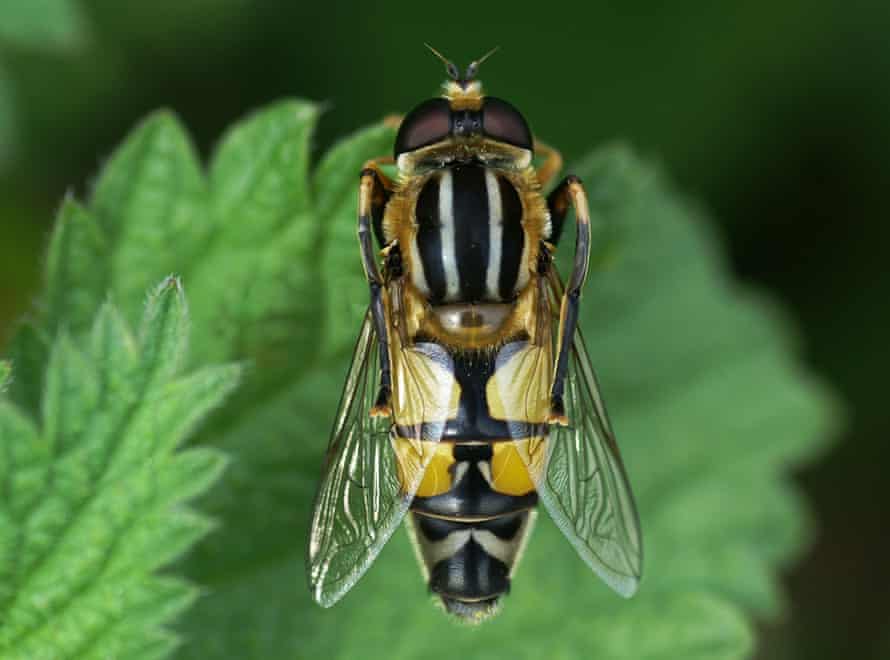Country diary: a ragwort feast for these very hungry caterpillars
St Mary’s, North Tyneside: In the late-summer scrub, fibrous plant remains show where the cinnabar caterpillars have been

The summer greenery hangs heavy on the trees. It’s hot and the air is wet. By the heath edge, where low cliffs slope to the beach, there is a lick of a breeze. Here, amid the stiff grass, gorse, hawthorn and wild rose a little way inland, it’s a still day, a stagnant day – a good day for sitting and watching small things.
Stout Helophilus hoverflies come humming to the textured white hemispheres of the umbellifers that sit in the grass like golfballs in the rough. In addition to the bee-like lateral striping on their abdomens, Helophilus also sport three smart longitudinal stripes on the thorax, like the insignia of a naval commander (or the strip of a Hull City player: these are also known as “footballer flies”). Craneflies stumble across the paths, tripping over their own feet. Dragonflies in silhouette zip back and forth across the wetland, forward-tilted like attack helicopters. A red darter pauses mid-flight to eyeball me close up.

A few weeks ago, this stretch of heath was crawling with cinnabar caterpillars. An inch or two long, decked out in the same gold-and-black striped livery as the hoverflies, these grubs of the cinnabar moth emerge in midsummer, hungry for ragwort. Ragwort is toxic to most animals; soon, so are the caterpillars. Untroubled by predators, they eat and eat, until they have eaten all the ragwort, at which point they begin to eat each other. At the end of summer – right about now – the survivors spin cocoons and settle into the sandy soil to see out the winter. The adult cinnabars (red and black now) appear in the spring.
Fibrous stands of dead ragwort mark the place where the caterpillars spent their orgiastic summer. I wonder how many now lie beneath my feet, lost in slow metamorphosis. The only lepidoptera I see are speckled wood butterflies, spiralling in territorial dogfights.
A grey seal rolls slowly in the small waves close to the beach. A sanderling chases the ebbing tide. A reed warbler surprises me by springing up from the wetland scrub. It must still be summer, sort of.